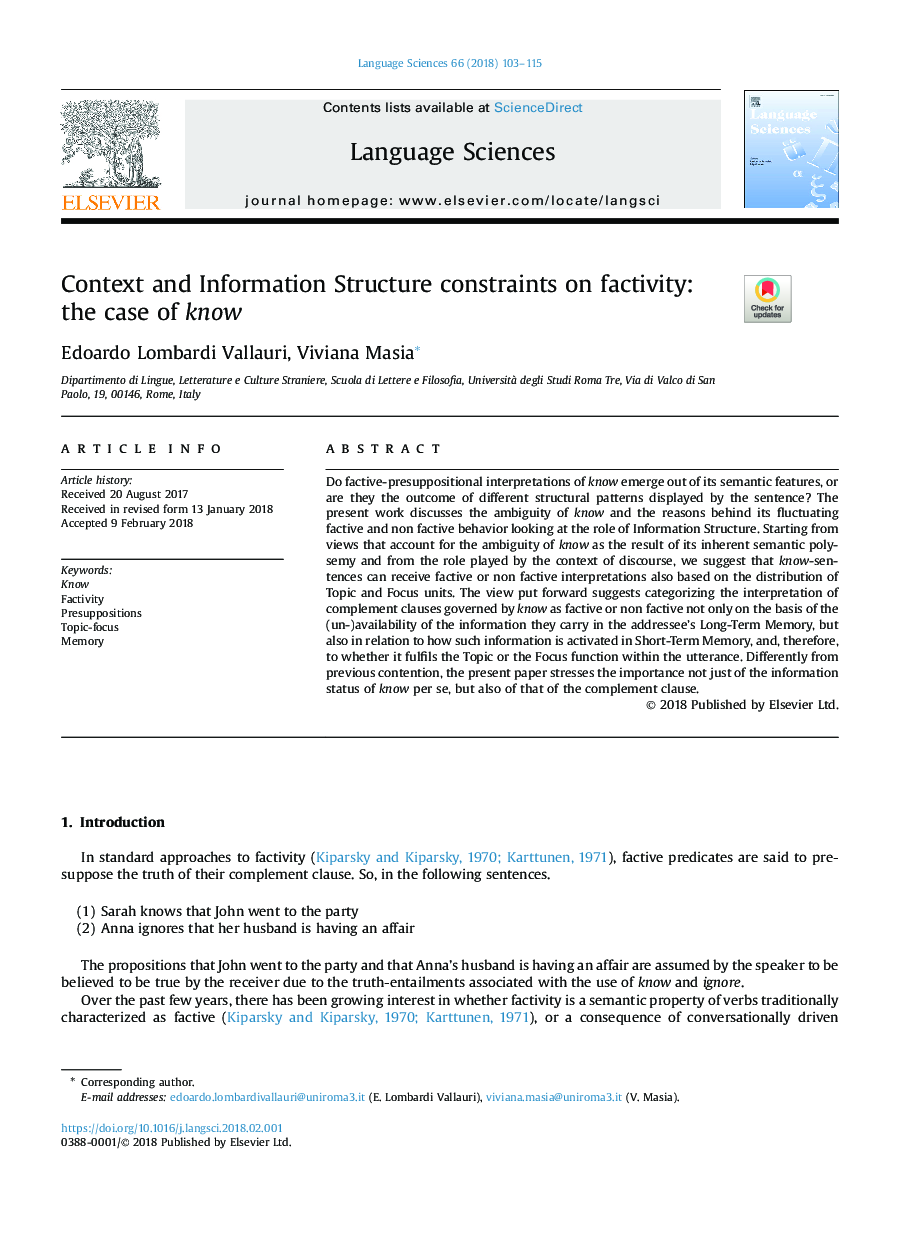| Article ID | Journal | Published Year | Pages | File Type |
|---|---|---|---|---|
| 7533814 | Language Sciences | 2018 | 13 Pages |
Abstract
Do factive-presuppositional interpretations of know emerge out of its semantic features, or are they the outcome of different structural patterns displayed by the sentence? The present work discusses the ambiguity of know and the reasons behind its fluctuating factive and non factive behavior looking at the role of Information Structure. Starting from views that account for the ambiguity of know as the result of its inherent semantic polysemy and from the role played by the context of discourse, we suggest that know-sentences can receive factive or non factive interpretations also based on the distribution of Topic and Focus units. The view put forward suggests categorizing the interpretation of complement clauses governed by know as factive or non factive not only on the basis of the (un-)availability of the information they carry in the addressee's Long-Term Memory, but also in relation to how such information is activated in Short-Term Memory, and, therefore, to whether it fulfils the Topic or the Focus function within the utterance. Differently from previous contention, the present paper stresses the importance not just of the information status of know per se, but also of that of the complement clause.
Keywords
Related Topics
Social Sciences and Humanities
Arts and Humanities
Language and Linguistics
Authors
Edoardo Lombardi Vallauri, Viviana Masia,
